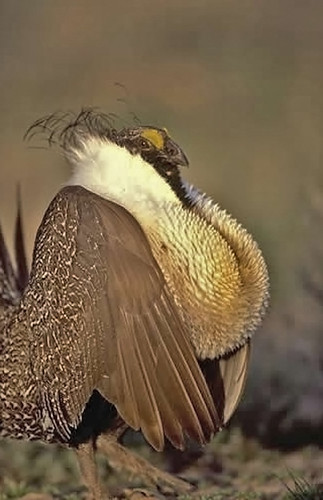
The annual ritual dance by the chicken-sized male Greater sage grouse attracts potential mates and perpetuates the species. However, this important mating ritual is a rare experience in the Devil’s Garden, a region in northeastern California where the greater sage grouse populations are in serious decline.
Western junipers here consume water that would typically be available to other species. A silent invasion of western juniper trees has slowly displaced a connected landscape that was once dominated by sagebrush. This slow degradation of habitat has resulted in the loss of over 85 percent of sage grouse habitat in California.
Over the past three decades, sage grouse populations have diminished from over 40 active leks (areas where males and females gather to mate) to one lek on the Clear Lake National Wildlife Refuge. In this area, sage grouse nearly disappeared in 2005.
The dramatic loss of sage grouse in northern California and the prospect of listing the bird as an endangered species prompted biologists at Klamath Basin National Wildlife Refuge Complex to team-up with the U.S. Forest Service, the Natural Resources Conservation Service, the California Department of Fish and Game, and local cattle ranchers to develop and implement strategies to conserve sage grouse in the Devil’s Garden.
In late September, U.S. Forest Service Recovery Act funded workers began treating 1,000 acres on the Modoc National Forest of western juniper to improve the habitat which borders the Clear Lake National Wildlife Refuge.

Contractors are conducting mechanical and hand thinning to reduce vegetation that is displacing native grasses, forbs, and shrubs.
Project work will continue into early 2013.
The mission of the U.S. Forest Service is to sustain the health, diversity, and productivity of the nation's forests and grasslands to meet the needs of present and future generations. Recreational activities on our lands contribute $14.5 billion annually to the U.S. economy. The agency manages 193 million acres of public land, provides assistance to state and private landowners, and maintains the largest forestry research organization in the world.
